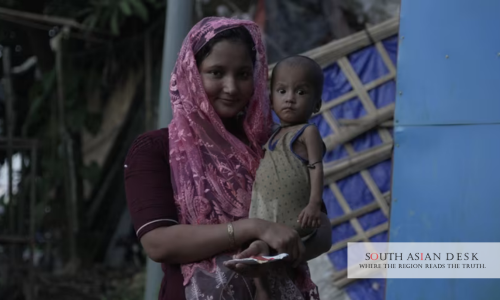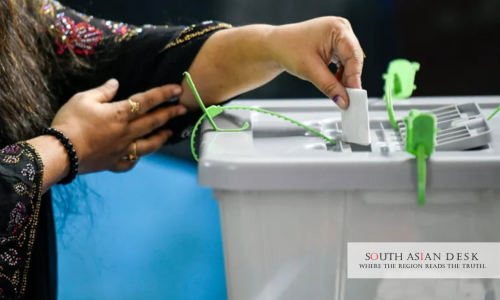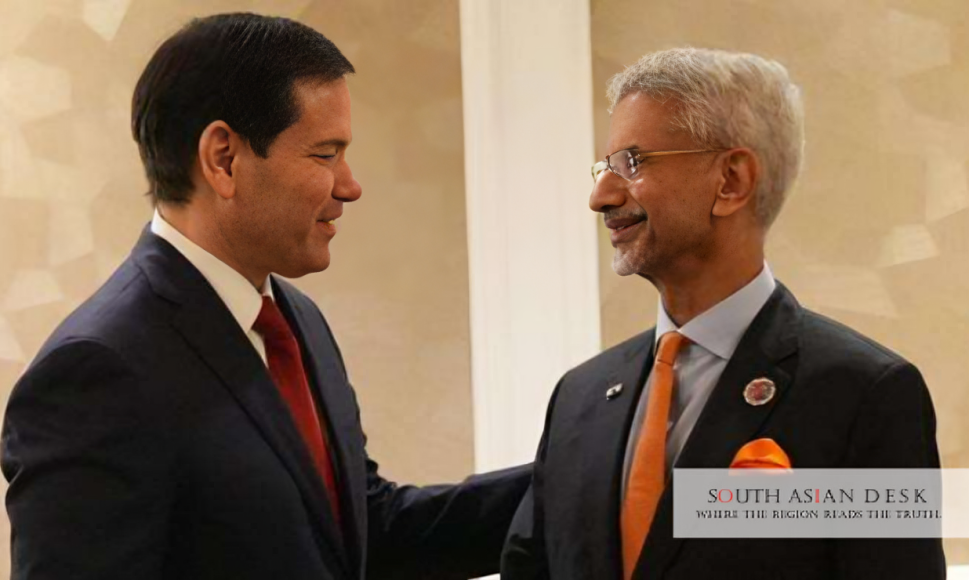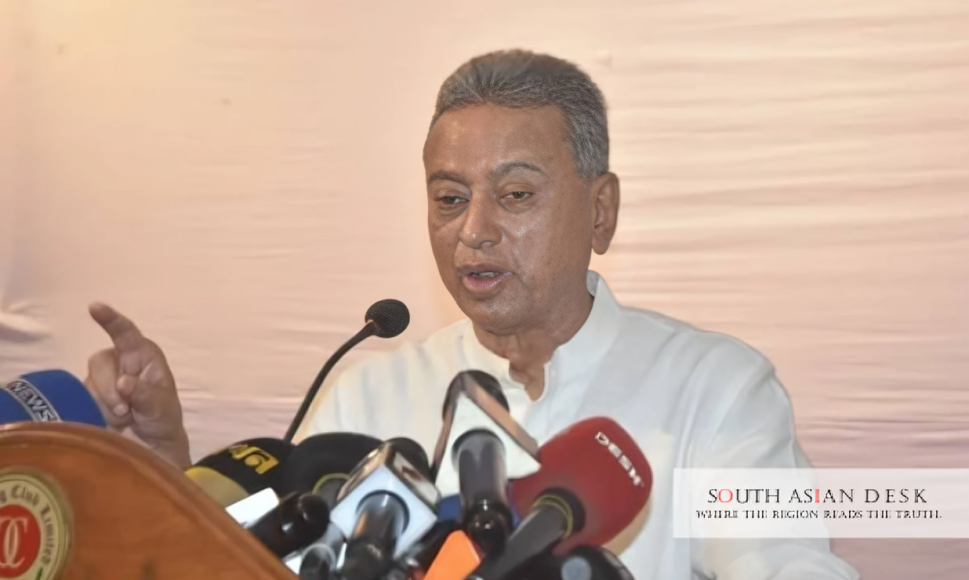Dhaka, Bangladesh – US aid cuts Rohingya hunger in Bangladesh’s Cox’s Bazar camps, where an 11 per cent surge in child malnutrition has emerged since January 2025, following the dismantling of USAID. Secretary of State Marco Rubio defends the reductions as efficiency measures, yet UN agencies warn of an impending catastrophe for 1.2 million displaced people. This development, reported on 25 October 2025, underscores tensions in global humanitarian funding.
The story matters across South Asia because Bangladesh shoulders the world’s most considerable refugee-hosting burden, with Rohingya camps straining local resources amid regional instability in Myanmar. These cuts ripple into Pakistan and India, where similar aid dependencies fuel migration pressures and border security concerns. For 600,000 children in the camps, malnutrition risks long-term developmental setbacks, amplifying economic costs for host nations already grappling with climate disasters and poverty.
Bangladesh Refugee Children’s Malnutrition Escalates Amid Funding Shortfall
Rohingya families in Cox’s Bazar face acute shortages after the US suspended $8 billion in annual foreign aid in January 2025. UNICEF data show an 11 percent increase in acute malnutrition cases among children from January to September 2025. This affects nearly 14,200 children requiring severe acute malnutrition treatment, up 27 per cent from early 2025 estimates.
Health workers are now rationing ready-to-use therapeutic food packets, reducing the daily portions from three to 2.5 per child. Each packet delivers 500 calories, sourced from powdered milk, peanuts, and vitamins. Without complete supplies, stunting – chronic malnutrition – persists at 41 per cent among camp children, per UNICEF surveys.
Shamsud Douza, joint secretary at Bangladesh’s Additional Refugee Relief and Repatriation Commissioner office, stated on 25 October 2025: “People are suffering. Humanitarian aid decreased, funding is going down, some people are losing jobs, education programmes, everything.” His comments highlight how US aid cuts to the Rohingya hunger extend beyond food to education and employment.
The World Food Programme reports a $126 million funding gap for the next 12 months, threatening to reduce rations to $12 per person per month. Over 150,000 new Rohingya arrivals since 2023 have entered camps already malnourished, fleeing Myanmar conflicts between the military and Arakan Army.
Marco Rubio’s US Aid Cuts, Defended as an Efficiency Drive
Marco Rubio’s foreign aid reductions target bureaucracy, Rubio asserted in a State Department briefing. On January 26, 2025, the department paused all foreign assistance under President Trump’s executive order to realign priorities with U.S. national interests.
A State Department spokesperson told reporters on 25 October 2025: “The Trump Administration is significantly enhancing the efficiency and strategic impact of foreign assistance programmes and continues to deliver life-saving assistance around the world, including to vulnerable populations like the Rohingya refugees, while remaining accountable to the American taxpayer.”
Rubio denied direct links between cuts and deaths, emphasising strategic reallocations. In September 2025, the US pledged an additional $60 million for Rohingya aid, covering emergency food and therapeutic packets. Yet critics note this covers only a fraction of the $8 billion void left by USAID’s dissolution.
The agency, once a cornerstone of US humanitarian efforts, managed supplies like therapeutic foods that are now dwindling in Bangladesh. Rubio’s plan canceled 83 percent of USAID contracts, affecting 5,200 agreements worth billions.
Trump Administration USAID Impact on Refugees in Camps
The Trump administration’s impact on USAID’s support for refugees’ daily experiences is evident, as 48 health facilities and 11 primary care centers scale back their services. Queues lengthen at hospitals, with restricted treatments for pneumonia and encephalitis – illnesses claiming young lives.
Mariam Khatun, a Rohingya mother, lost her seven-year-old daughter Estafa to aspiration pneumonia in February 2025. Khatun links the death to delayed care amid funding dips, though medics cite no direct causation. Such cases fuel fears, with a Boston University tool estimating that 88 global deaths occur hourly due to aid shortfalls.
UNHCR reports 1.2 million Rohingya in Cox’s Bazar, the largest refugee settlement worldwide. Global acute malnutrition declined to 8.6 percent in 2024, according to the UNHCR’s annual results; however, reversals in 2025 threaten to undo these gains. Nearly half of children under five show malnutrition signs, Amnesty International noted in March 2025.
Deepika Sharma, UNICEF’s Chief of Nutrition in Bangladesh, warned on 25 October 2025: “More and more children are being detected with the severest form of malnutrition, and they are at a risk of mortality because of that.” She added that without sustained funding, children “will die.”
Aid groups, such as the International Rescue Committee, have cut 5,000 jobs globally to preserve frontline work. Hasina Rahman, IRC’s Bangladesh director, described queues at clinics: “We see long queues now in our hospitals, people waiting for treatments. Services have been restricted and are limited now in the camps, and that is creating a massive impact.”
Bangladesh hosted a funding conference in August 2025, but pledges have yet to materialize. UN Secretary-General António Guterres, after a March 2025 camp visit, called Cox’s Bazar “ground zero for the impact of budget cuts on people in desperate need,” predicting suffering and deaths.
A Lancet study forecasts 14 million global deaths over five years from such cuts. In Sittwe, Myanmar, over 300 of 432 camp families have skipped regular meals since June 2025, when aid halts worsened malnutrition among Bangladesh refugee children.
Background: Rohingya Exodus and US Aid Role
The Rohingya fled Myanmar’s 2017 violence, swelling Bangladesh camps to 1.2 million. US aid, via USAID, funded 30 percent of humanitarian needs before 2025. Trump’s January 20, 2025, inauguration triggered reviews, culminating in USAID’s January dismantling.
Marco Rubio’s foreign aid reductions aligned with vows to slash waste, per a 26 January State Department release. This shifted focus to “strategic” aid, pausing programmes until reassessment. Bangladesh, hosting without a formal refugee status, absorbs $1 billion yearly costs.
UNHCR’s 2025 plan seeks $934.5 million to support 1.5 million Rohingya refugees and their hosts, with funding allocated at 12 percent. New York hosted a 30 September 2025 UN conference, where envoy Julie Bishop urged: “The needs of the Rohingya in Bangladesh are outpacing resources at an alarming rate. Without new contributions, food assistance for the entire Rohingya community will come to a complete halt in two months.”
What’s Next: Funding Cliff Looms for Rohingya
Aid agencies predict a 2026 “funding cliff” without donor surges. Bangladesh pressures repatriation to Myanmar, stalled by violence. The Trump administration’s impact on refugees through USAID may ease if reallocations prioritize Asia, but the UN calls for an additional $1 billion.
US aid cuts, Rohingya hunger persists as a test of global solidarity, with South Asian nations bracing for spillover effects.
Published in SouthAsianDesk, October 26th, 2025
Follow SouthAsianDesk on X, Instagram, and Facebook for insights on business and current affairs from across South Asia.






